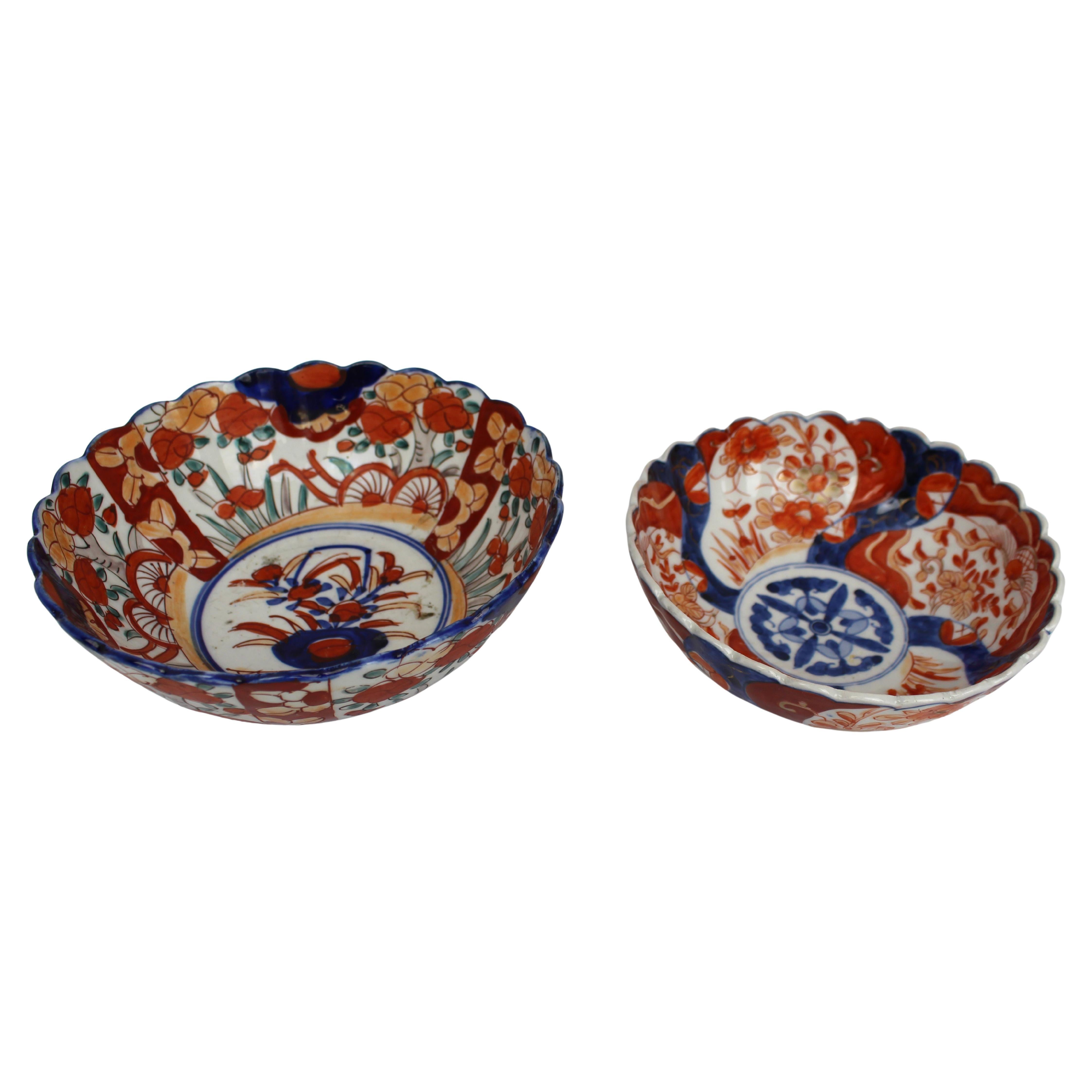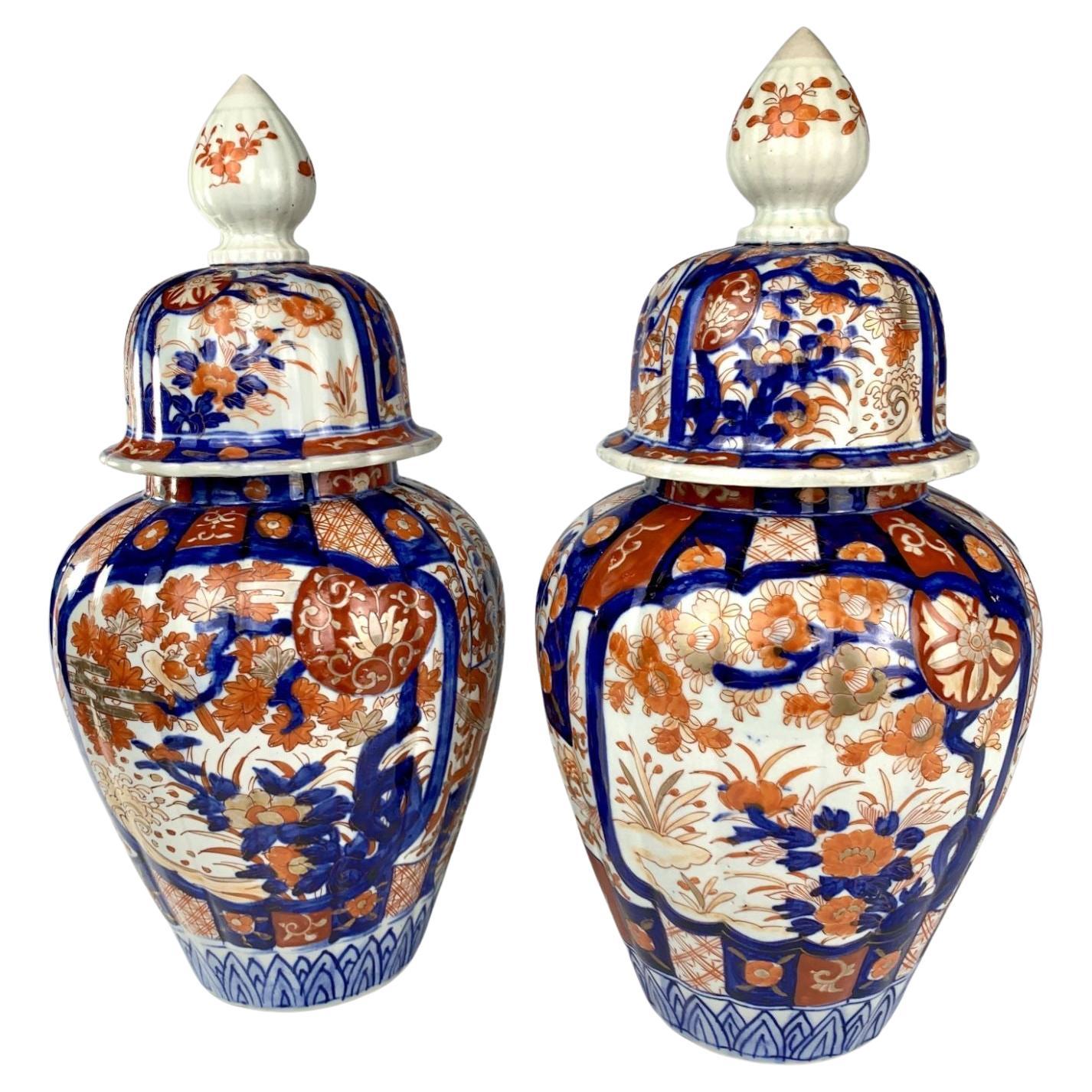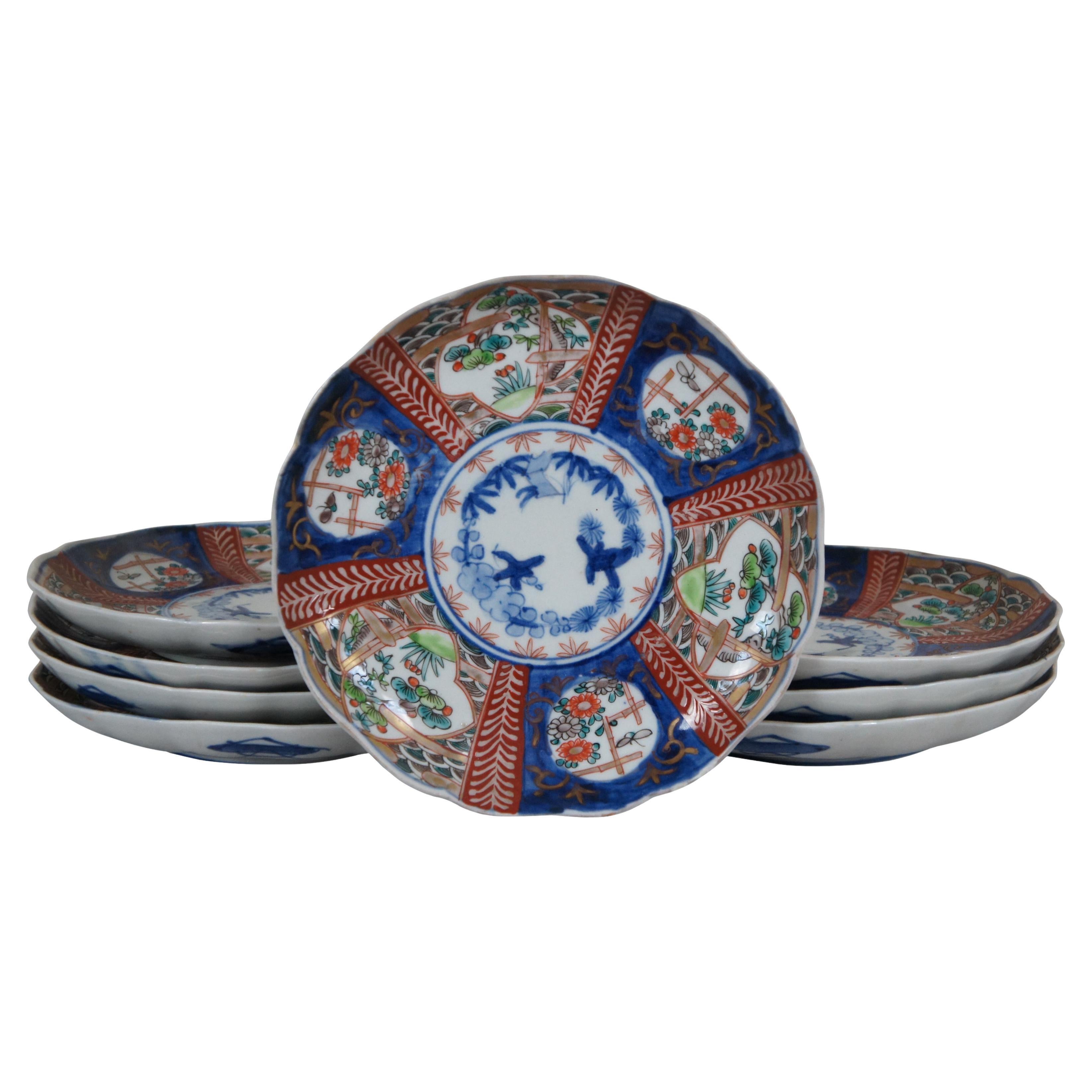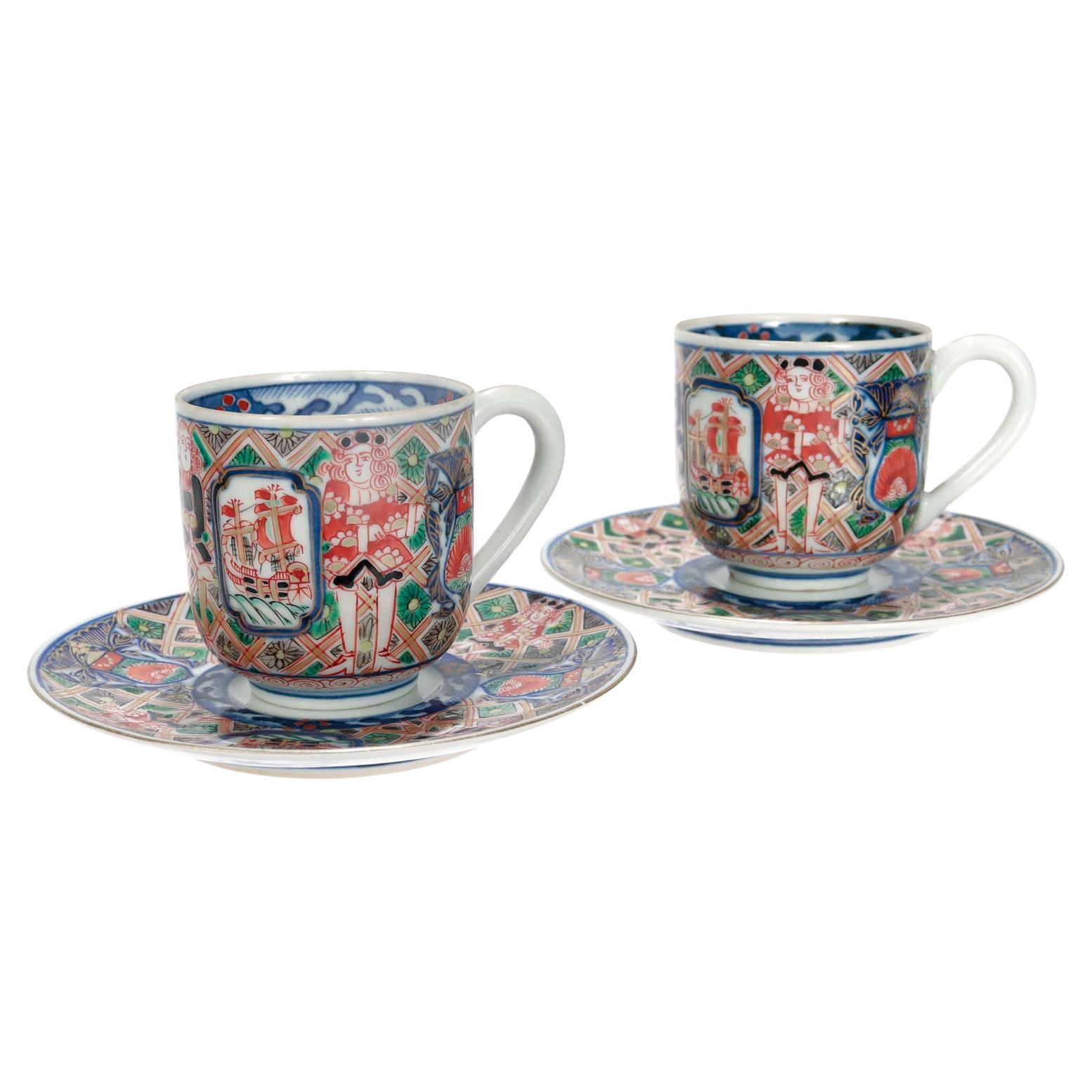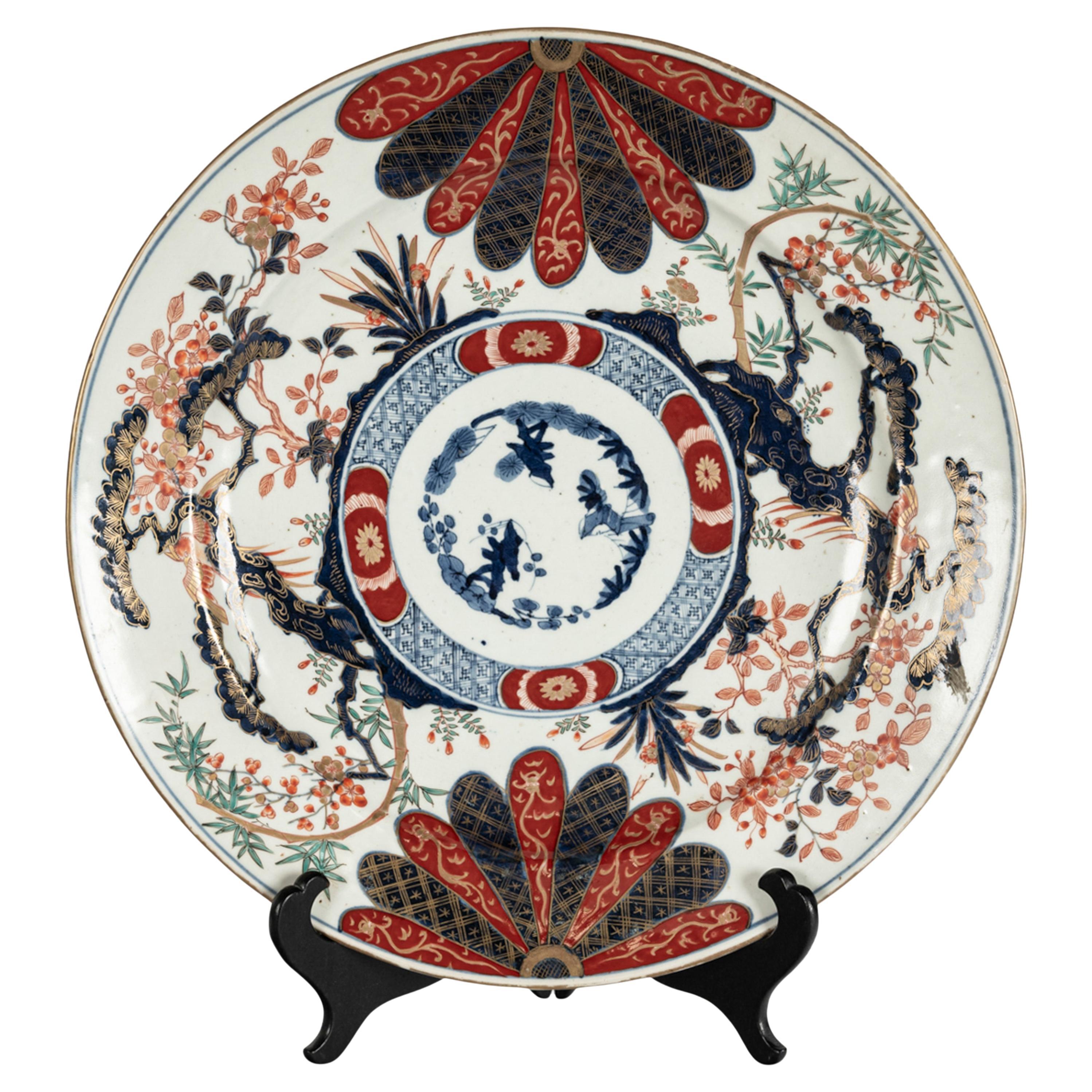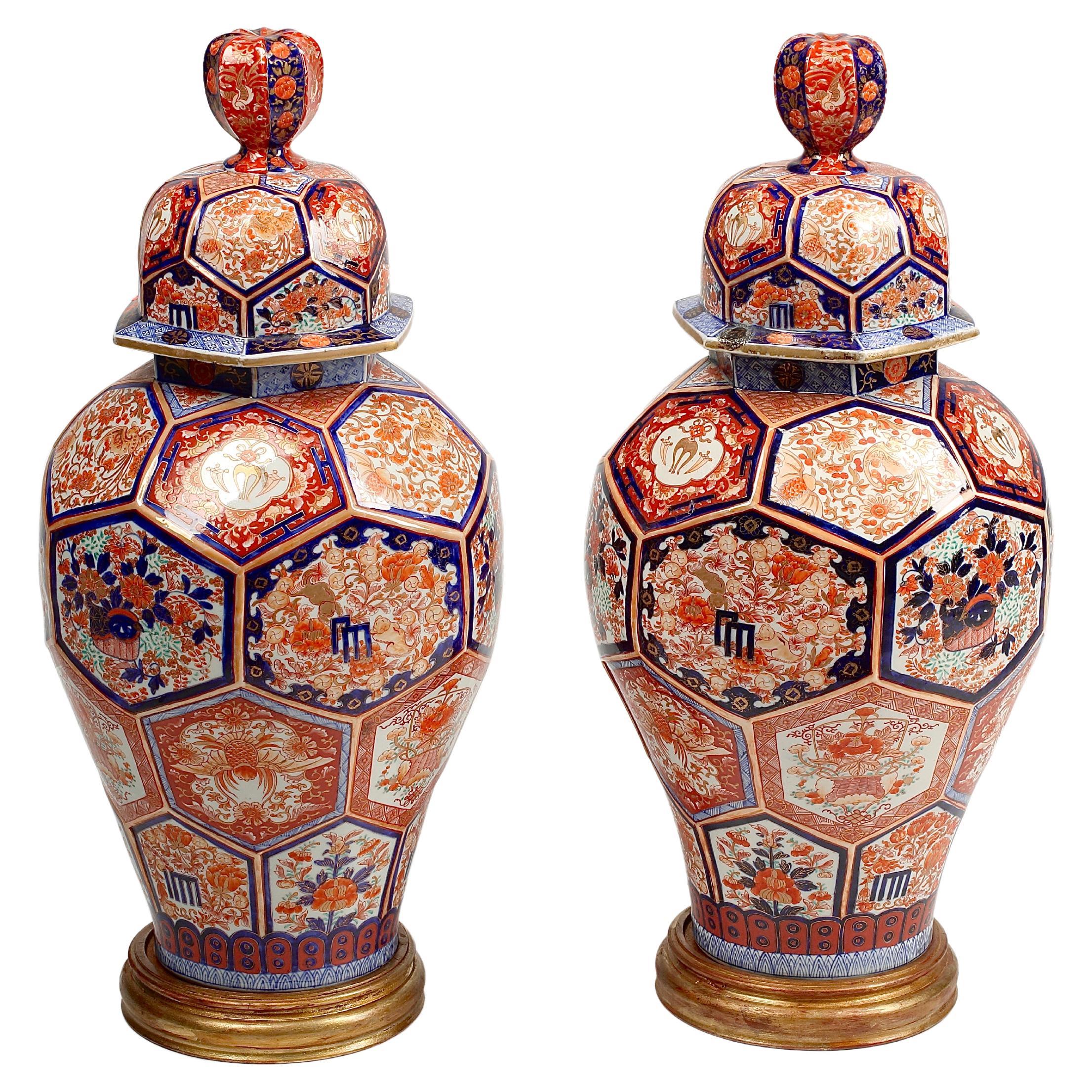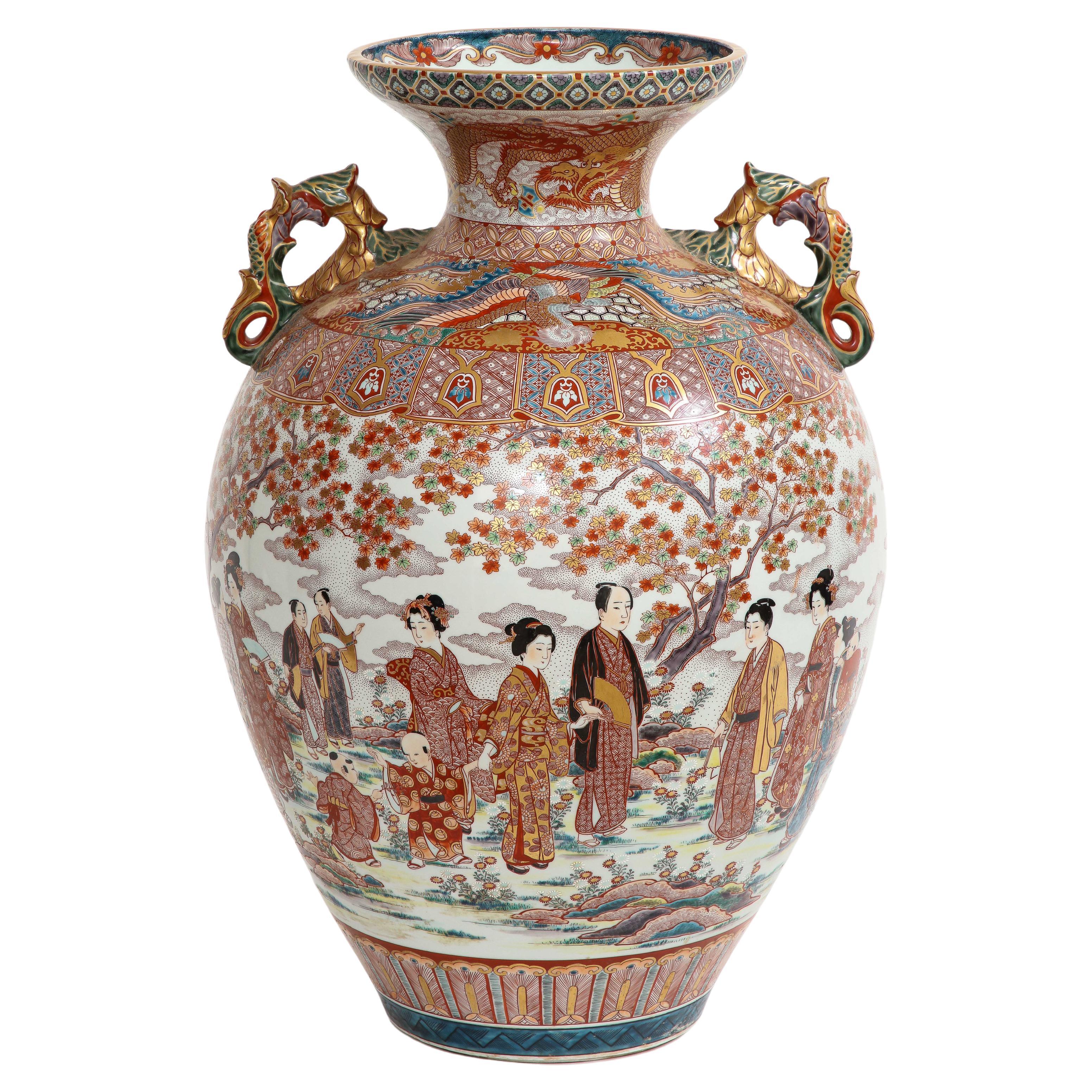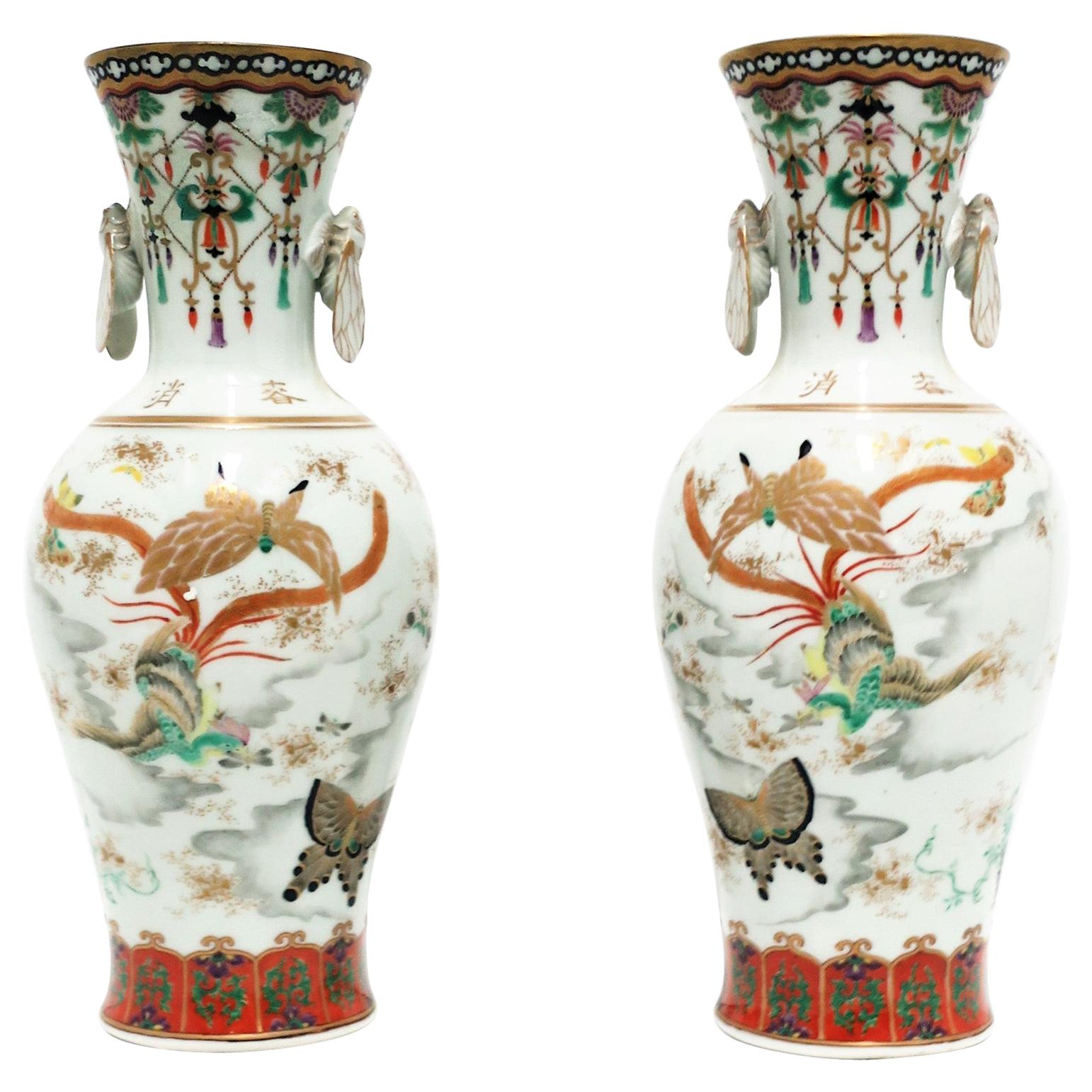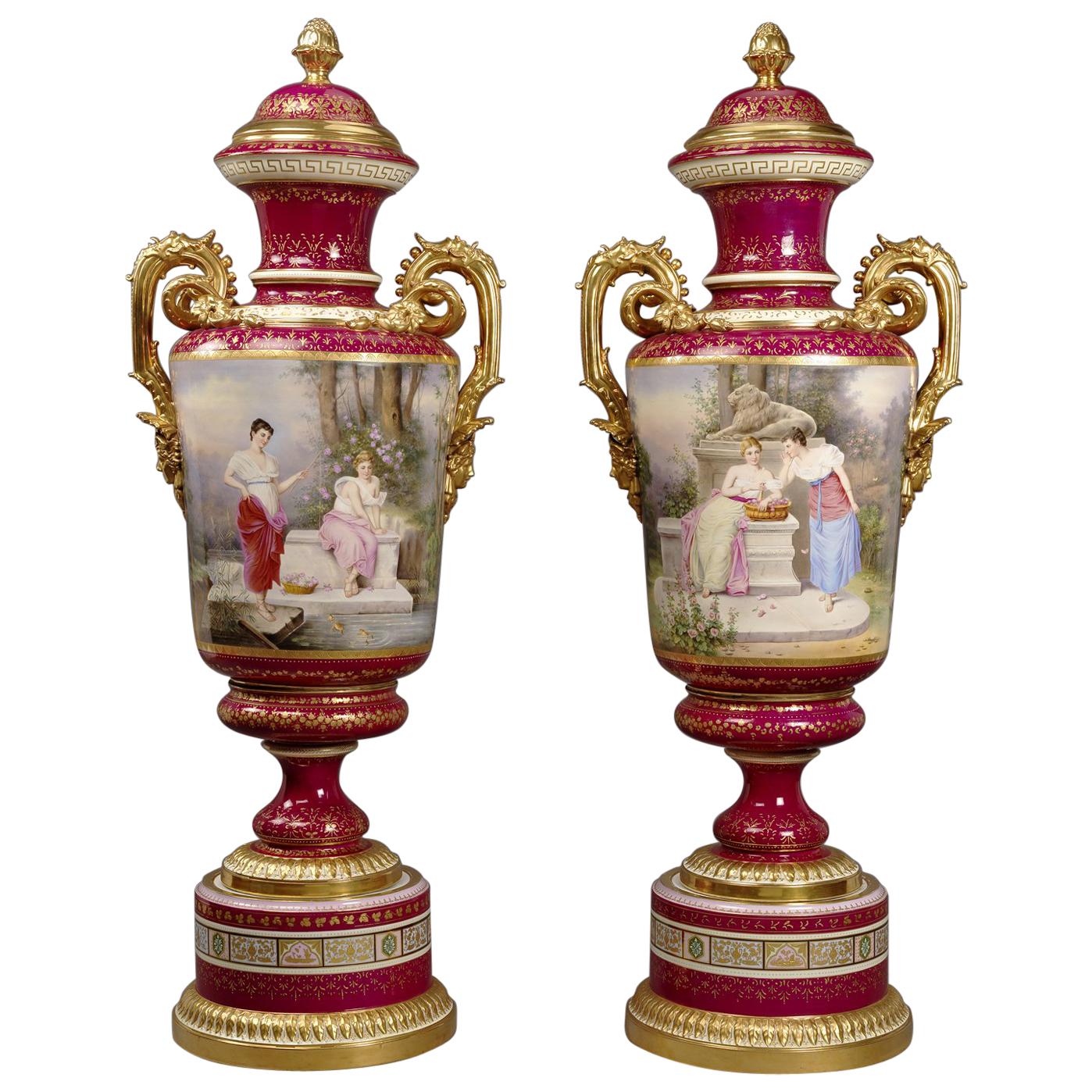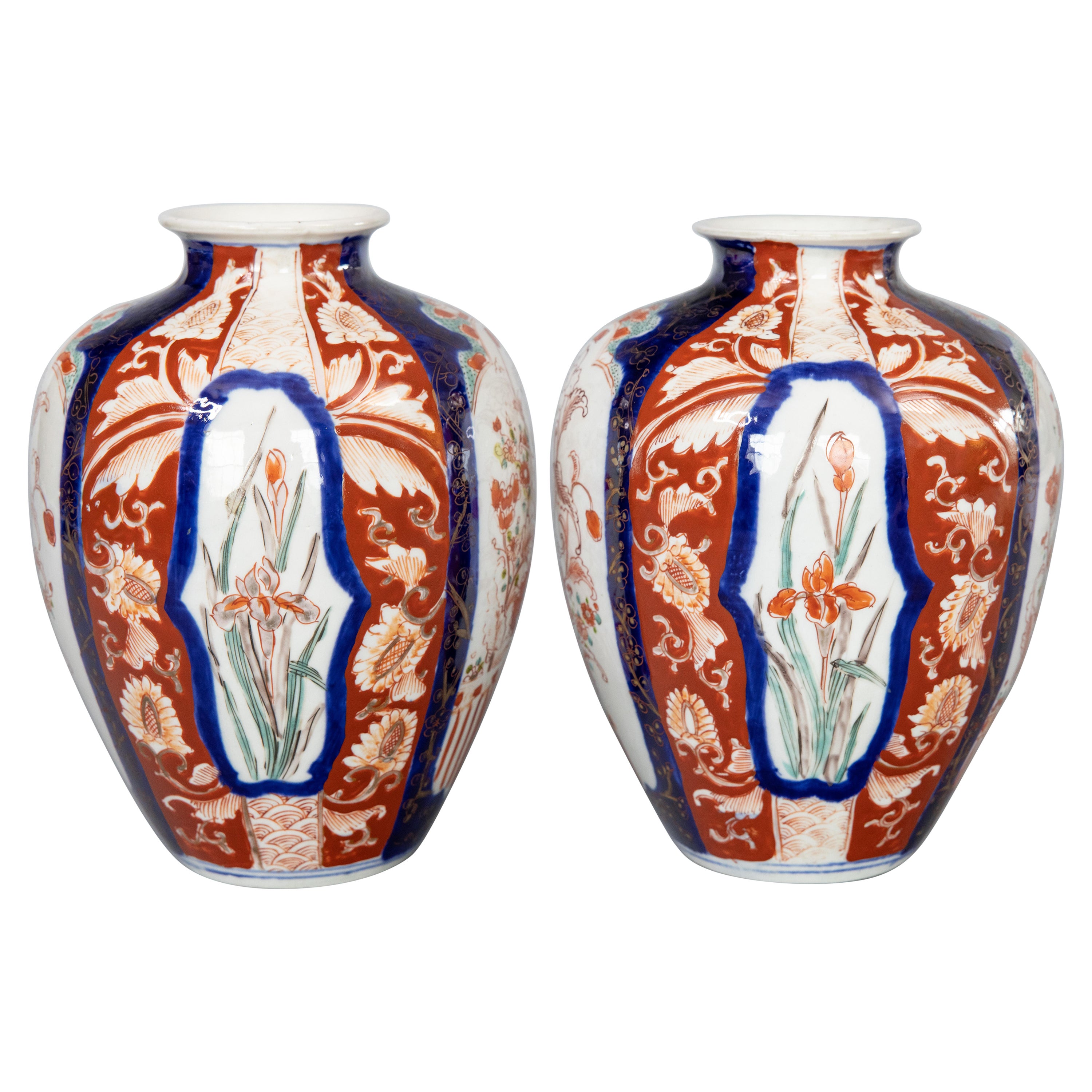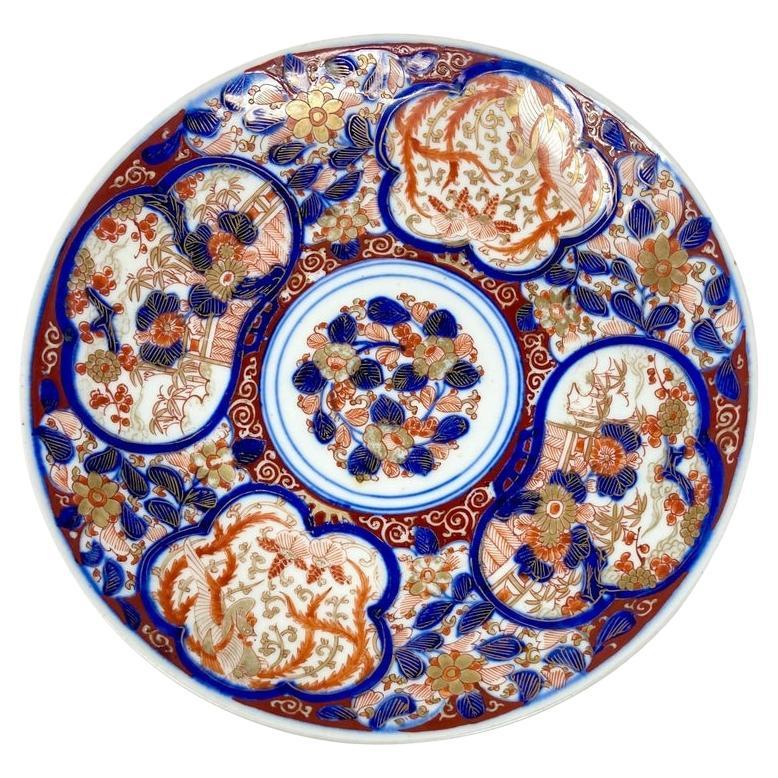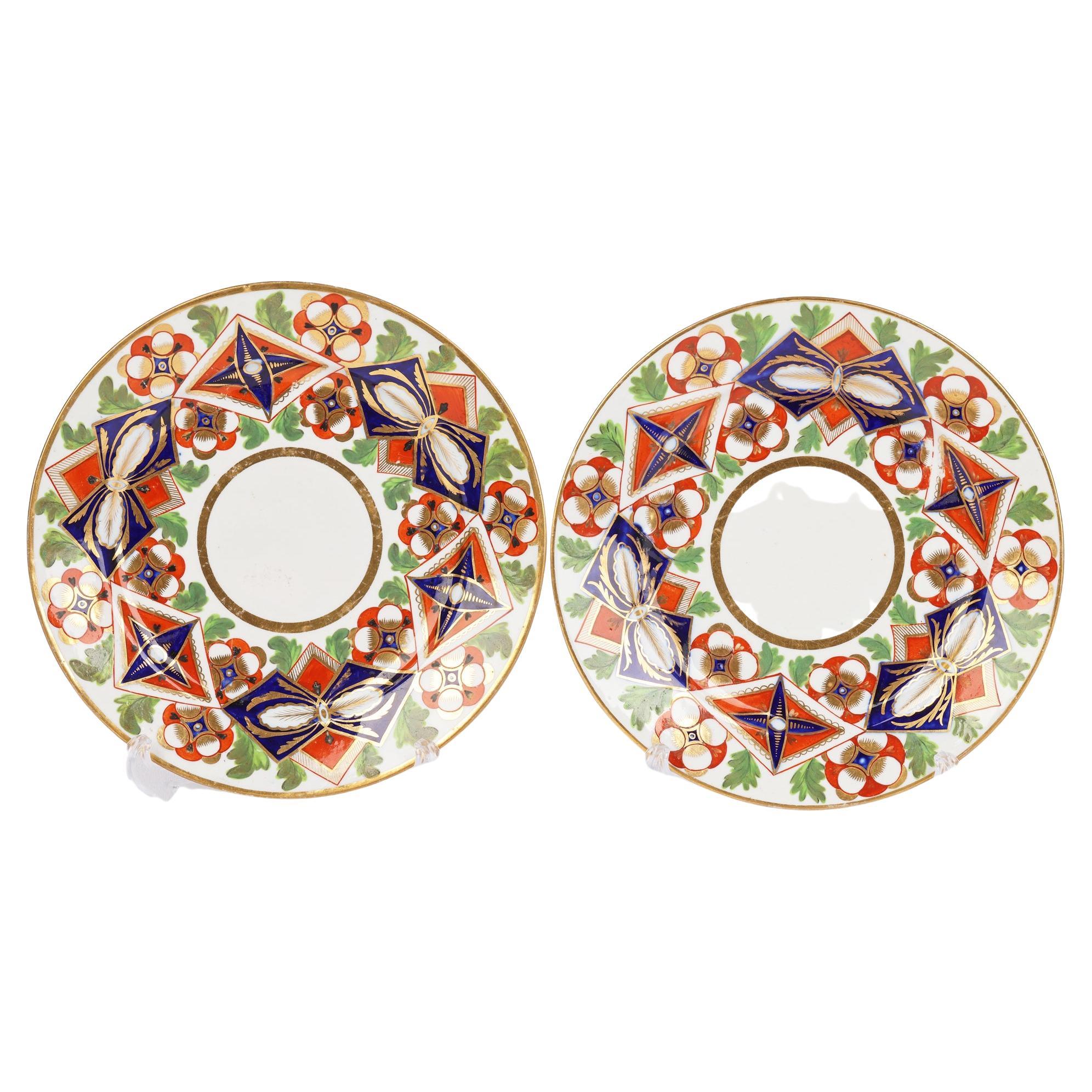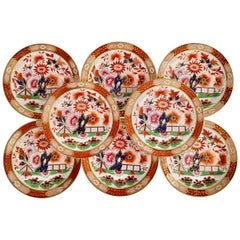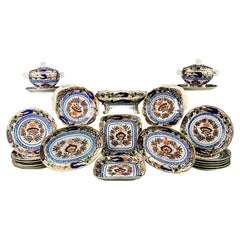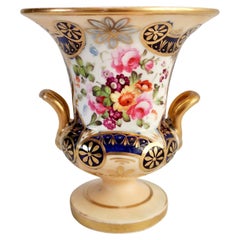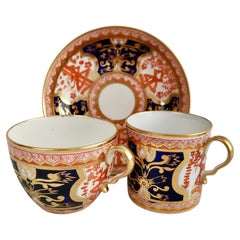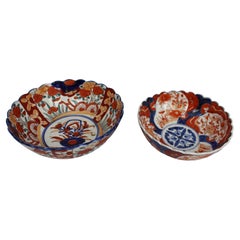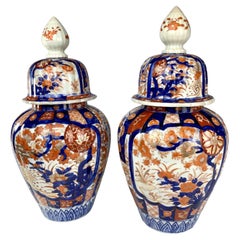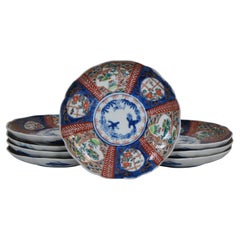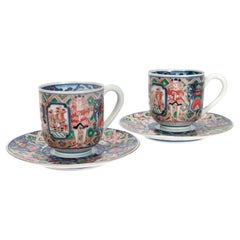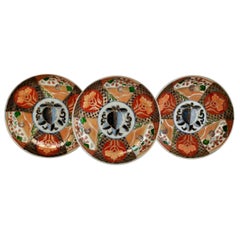
Set of 3 Imari Porcelain Plates, Pomegranate Pattern Late Meiji, circa 1900
View Similar Items
Want more images or videos?
Request additional images or videos from the seller
1 of 13
Set of 3 Imari Porcelain Plates, Pomegranate Pattern Late Meiji, circa 1900
Price:$530
$625List Price
About the Item
- Dimensions:Height: 1.5 in (3.81 cm)Diameter: 7.25 in (18.42 cm)
- Sold As:Set of 3
- Style:Meiji (Of the Period)
- Materials and Techniques:
- Place of Origin:
- Period:
- Date of Manufacture:circa 1900
- Condition:Wear consistent with age and use. Perfect antique condition.
- Seller Location:London, GB
- Reference Number:Seller: CP06-491stDibs: LU4805116297791
About the Seller
5.0
Gold Seller
Premium sellers maintaining a 4.3+ rating and 24-hour response times
Established in 2016
1stDibs seller since 2019
225 sales on 1stDibs
Typical response time: 2 hours
Authenticity Guarantee
In the unlikely event there’s an issue with an item’s authenticity, contact us within 1 year for a full refund. DetailsMoney-Back Guarantee
If your item is not as described, is damaged in transit, or does not arrive, contact us within 7 days for a full refund. Details24-Hour Cancellation
You have a 24-hour grace period in which to reconsider your purchase, with no questions asked.Vetted Professional Sellers
Our world-class sellers must adhere to strict standards for service and quality, maintaining the integrity of our listings.Price-Match Guarantee
If you find that a seller listed the same item for a lower price elsewhere, we’ll match it.Trusted Global Delivery
Our best-in-class carrier network provides specialized shipping options worldwide, including custom delivery.More From This Seller
View AllSet of 8 Barr Flight & Barr Porcelain Plates, Imari Fence, Regency, 1811-1813
By Barr, Flight & Barr Worcester
Located in London, GB
This is a spectacular set of eight plates made by Barr Flight & Barr between 1811 and 1813. They are made in one of the many versions of the "Imari Fence" or "Japan" pattern.
Barr...
Category
Antique 1810s English Regency Dinner Plates
Materials
Porcelain
$4,760 Sale Price / set
20% Off
Free Shipping
Coalport John Rose Porcelain Dessert Service, Imari Pattern, ca 1805
By John Rose, Coalport Porcelain
Located in London, GB
This is a rather stunning 25-piece dessert service made by John Rose at Coalport around the year 1805. It consists a centre piece on four feet, two oval dishes, two shell dishes, two...
Category
Antique Early 1800s English George III Dinner Plates
Materials
Porcelain
$3,360 Sale Price / set
20% Off
Free Shipping
Staffordshire Porcelain Campana Vase, Salmon, Gilt and Flowers, circa 1820
By Staffordshire
Located in London, GB
On offer is a very fine small porcelain campana vase made circa year 1820 by an unknown Staffordshire potter. The vase has a beautiful delicate salmon colored ground, rich gilding an...
Category
Antique 1820s English Regency Vases
Materials
Porcelain
$612 Sale Price
20% Off
Free Shipping
Spode Porcelain Teacup Trio, Red Imari Dollar Pattern, Regency, ca 1810
By Spode
Located in London, GB
This is a beautiful orphaned teacup made by Spode in about 1810. It bears a lavish Japanese-inspired Imari pattern.
Spode was the great pioneer among the Georgian potters in England. Around the year 1800 he perfected the bone china recipe that has been used by British potters ever since, and he was also the leading potter behind the technique of transferware, making it possible for English potters to replace the Chinese export china, which had come to an end around that time, with their own designs. This was fundamental to a thriving industry that would last for about 150 years and provide half the world with their tableware. Spode porcelain is regarded as one of the highest quality porcelains around; for a soft-paste porcelain it is surprisingly hard and fine, and has a wonderful bright white colour.
The pattern on this can is called "Dollar" pattern, a very famous pattern that was used by English potters in the 18th and early 19th Century. It is obvious why it is called “dollar” - but its origin is less obvious! It is thought that this pattern was derived from a very old Chinese pattern depicting a tree with elaborate foliage that hides a Chinese character representing longevity or happiness. Traditionally, this went with a an image called “Taotie”, which was used on very ancient bronze vases...
Category
Antique Early 1800s English Regency Porcelain
Materials
Porcelain
$420 Sale Price / set
20% Off
Free Shipping
Samuel Alcock Writing Desk Set Coalbrookdale Porcelain Encrusted Flowers, ca1830
By Samuel Alcock & Co.
Located in London, GB
A complete writing desk set in the Coalbrookdale style with lavishly encrusted flowers, consisting of a tray, an inkwell with inner liner and double cover, a pen holder, and a blot h...
Category
Antique 1830s English Rococo Revival Vases
Materials
Porcelain
$1,388 Sale Price / set
20% Off
Free Shipping
English Garniture of 5 Porcelain Vases, White, Hand Painted Fruits, 1820-1825
Located in London, GB
This is a beautiful garniture of five vases made by an unknown English maker in about 1820-1825. The garniture consists of one campana vase and four differently sized spill vases. Th...
Category
Antique 1820s English Regency Vases
Materials
Porcelain
$1,196 Sale Price
20% Off
Free Shipping
You May Also Like
Pair of Japanese Imari Porcelain Bowls, Meiji Period, circa 1900
Located in Worcester, GB
Pair of Japanese Imari Porcelain Bowls, Meiji Period, circa 1900
A fine pair of Japanese Imari porcelain bowls dating to the Meiji period, circa 1900. Each of fluted circular form w...
Category
20th Century Japanese Porcelain
Materials
Porcelain
Pair of Antique Japanese Imari Jars Meiji Period Circa 1880
Located in Katonah, NY
Both jars are hand-painted in traditional Imari designs. They feature beautiful waterside scenes painted in cobalt blue and two shades of iron red, all with gilded accents.
The colors are vibrant, and the scenes are complex.
One jar features a shoreline, while the other scene features a cresting wave.
Above the main scenes on each jar, there are medallions adorned with gilded floral decorations. Additionally, a ring of patterns inspired by Japanese textiles encircles the shoulder and base of each jar.
The hand-painted panels on the reverse side mirror the designs on the front but include many subtle variations.
On the side of each jar, there is a classic Imari depiction of a vase set on a garden terrace.
These exquisite pieces were crafted in Japan during the Meiji Period, around 1880.
Dimensions: 15" tall x 7" diameter at the widest point
Condition: Excellent.
Price: $2,800
Background of Late Imari Porcelain: Imari porcelains were first exported from Japan to Europe in the 17th century. In the third quarter of the 19th century, Imari porcelain found an eager export market in Europe as the style was compatible with the colors and designs of the oriental rugs used...
Category
Antique Late 19th Century Japanese Jars
Materials
Porcelain
8 Antique Japanese Imari Meiji Scalloped Porcelain Salad Dinner Plates 9"
Located in Dayton, OH
Set of 8 early 20th century Japanese imari porcelain salad / dinner plates with scalloped edges, hand painted with fan-like panels of landscapes and flowers, surrounded with designs ...
Category
Early 20th Century Japanese Meiji Porcelain
Materials
Porcelain
$640 Sale Price / set
20% Off
Pair of Antique Japanese Meiji 'Black Ship' Imari Porcelain Cups & Saucers
By Imari Porcelain
Located in Philadelphia, PA
A fine pair of antique Japanese Imari porcelains demitasse coffee or tea cups & saucers.
In the 'Black Ship' pattern.
Decorated throughout with painted depictions of Western sailors and their ships in reds, blues, and greens with extensive gilt accents throughout.
The centers of the cups and saucers each have a stylized gilt kanji for longevity (寿).
The bases of both cups & saucers have apocryphal Chinese reign marks for the Ming Dynasty of the Chenghua period (太明成化年製).
Black Ships (黒船, kurofune) was a name used for Western sea vessels arriving in Japan from the 16th - 19th Century. The name originated from the very first Portuguese vessels to trade with the Japanese ca. 1543 had hulls painted black. When the expedition of Matthew Commodore Perry in 1853 forcibly ended Japan's self-imposed isolationist sakoku (鎖国, lit. "locked country") period, his steam-powered warships inspired fear in the Japanese populace with their coal fueled black smoke. Subsequently, the Black Ships became symbolic of the end of Japan's isolationist period.
Simply a wonderful set of antique Arita...
Category
Early 20th Century Porcelain
Materials
Porcelain
Monumental Antique Japanese Meiji Period Imari Porcelain Charger Plate 1880
Located in Portland, OR
A fine & monumetal Japanese Meiji period Porcelain charger/plate, circa 1890.
The charger is very finely decorated with underglaze blue, red iron oxide glazes and heightened with gil...
Category
Antique 1880s Japanese Meiji Porcelain
Materials
Porcelain
Pair of Large 19th Century Japanese Imari Porcelain Temple Jars with Cover
Located in El Monte, CA
An exceptional pair of large scale late 19th century Japanese Imari temple jars from the Meiji period with covers, also can be referred to as ginger jars. Rare octagonal facet cuts a...
Category
Antique Late 19th Century Japanese Meiji Porcelain
Materials
Porcelain
